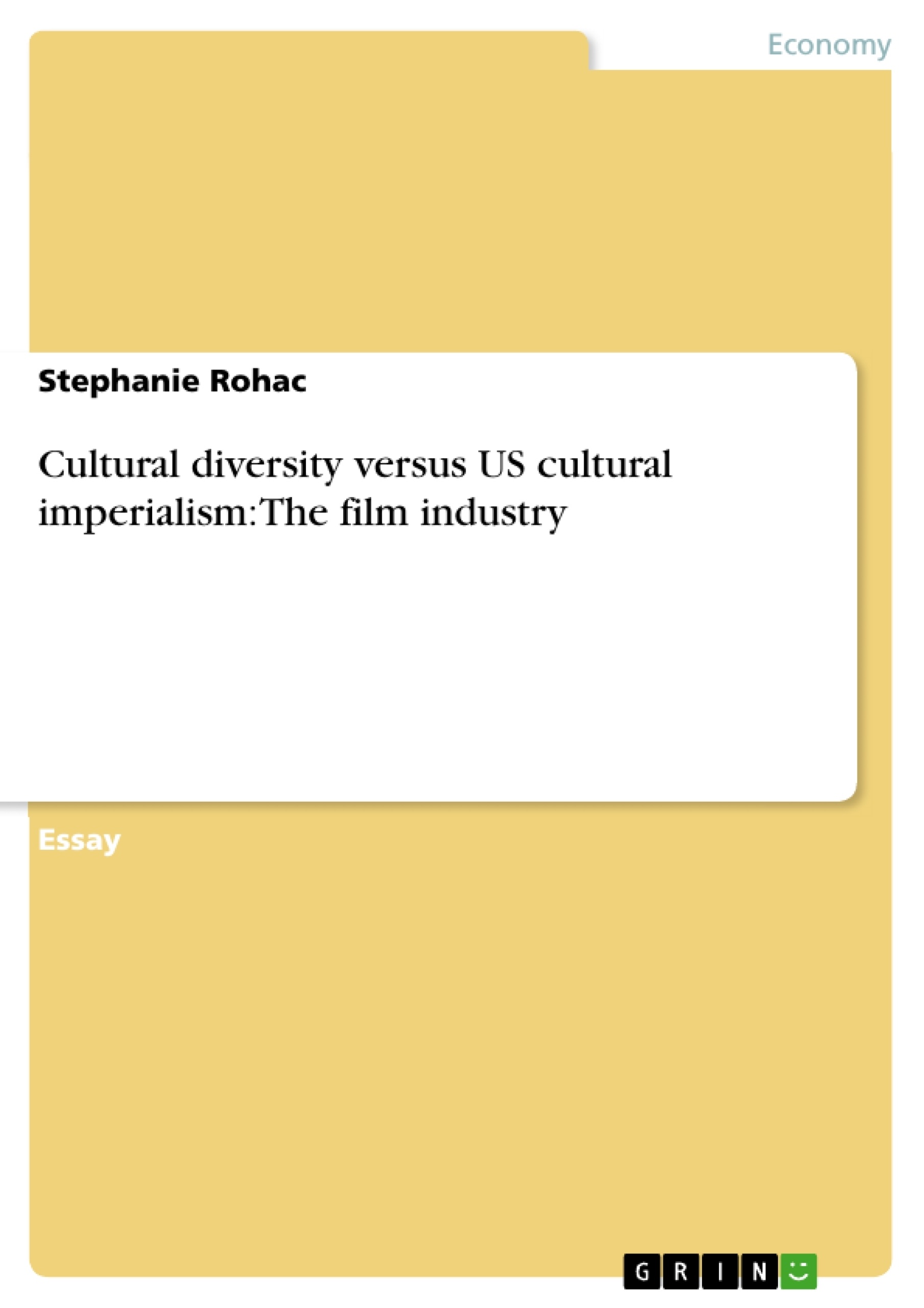Excerpt
Structure
I. What are films? An introduction
II. Why does the US dominate trade? Principles
i. Definitions
ii. Debates and trade agreements
iii. Facts and figures
iv. Economic analyze
v. Different approaches
vi. Finance and Talent
III. How sustainable is the US? Perspectives
A. Appendix
a. Trade flows for film and TV programmes between EU and US
b. Cinema market shares
B. Literature
C. Declaration of Authorship
I. What are films? An introduction
Films can be seen as cultural products. To understand international trade of these cultural products it is necessary to reveal how industries and markets operate and evolve, furthermore analyzing the influence of industry structure, government policies and global economic conditions. International trade allows expanding markets to become certainly larger than the domestic one, as a result the consumer has the possibility to choose within a greater variety of goods and to take advantage from lower prices. Films take part of each culture. Films are products, produced and sold in intention to make profits.
First of all a regard goes to these products with their three particular characteristics.[1]
They are “Joint-consumption goods” meaning that an additional viewer has no effect on costs; to produce an extra copy is very low cost-relative to the production costs. The production costs of the first copy or the original is analogous to the Research & Development costs representing the biggest investment volume while the costs per unit respectively the replication of the film are comparatively low. The products can not be affected. While watching a film the consumer does not have the possibility of modification. This is in contrast to other products which alter within consumption e.g. an apple. These ones can be called private goods whereas films are considered as public goods, joint-consumption goods.
This characteristic can be accepted as the first challenge for distribution and sale. In younger times, the joint-consumption characteristic is one of the reasons for the high rates of film piracy. Piracy of intellectual property has been a growing problem, namely China and Hong Kong are described as a particular centre for copyrighted videos, recordings, music, business and entertainment software.
“Cultural discount” as the second characteristic should be interpreted as the following. When films are traded internationally, consumers of different culture have problems of identification with the way of life, values, history, institutions and other cultural specific attributes which mostly describe the domestic culture. Religion, education, environment and other specifics differ from nation to nation. Obviously and without describing the whole web of cultural differences these fundamental differences cause problems when trading. Of course language plays an important role, subtitles or translations can not reflect the story in the original meaning. Accents and idioms, another humour or other inhibition thresholds complicate the establishment of a film in other foreign cultures. The cultural discount characteristic is one reason for a high concentration in a few categories; the mentioned cultural discount varies with the genre. An Action drama is surely easier to trade than situation comedy where domestic humour and language play the major role. It explains further why regional programmes are preferred in most countries.
The third predicate arises as “external benefits”. An externality is a cost or a benefit arising from an economic transaction which falls on a third party and is not taken into account by either party to the transaction.[2] To speak from external benefits for a given TV programme or film, the audiovisual product has to generate benefits to other members of society through improved interaction. As André Guérin[3] says, “A given population should from time to time be able to see itself on the screen [..]”
The daily news or documentary films can provide further information; can make aware of new developments and trends, different issues or events. They are useful to explain situations, behaviour or emotions. When films provide external benefits but the producers, distributors and exhibitors never receive any compensation for this additional consumption benefits from the market, we call it a market failure.
II. Why does the US dominate trade? Principles
i. Definitions
When considering two competitors, we first have to define terms used like cultural diversity and US cultural imperialism. US cultural imperialism is seen as a kind of market dominance,
the fact that a powerful country increases its influence over other countries through business, culture etc.[4]
The American trade in television programmes, feature films and videos dominates the world market. In addition, the Hollywood system assures concentrated competitive industry. The title US cultural imperialism may also come up from the US government methods pressuring foreign governments and institutions to disseminate US films and TV programmes which promote the US way of life, in detail business norms, political and cultural values and consumption of US consumer goods.
“Cultural diversity”, in a dictionary meaning a range of many people or things that are very different from each other,[5] describes the opposed situation of film industry structure in Non-US- countries, e.g. France, Japan, Germany, India. Diversity complicates the production and sale of films because the industry mostly can not profit from economies of scale, learning curve effects or economies of agglomeration.
[...]
[1] Hoskins/McFadyen/Finn, Global Television and Film- An Introduction to The Economics of the Business, Introduction, culture and economics, p.4.
[2] Hoskins/ Mc Fadyen/ Finn, Global Television and Film- An Introduction to The Economics of the Business, The Rationale for Government Intervention and Implications for Assessing Trade Disputes, p. 81.
[3] André Guérin was president of Québecs Régie du Cinéma et de la Vidéo.
[4] Wehmeier, Oxford Advanced Learners Dictionary, Term “imperialism”.
[5] Wehmeier, Oxford Advanced Learners Dictionary, Term “diversity”.
- Quote paper
- Bachelor of Arts in International Management (B.A.) Stephanie Rohac (Author), 2006, Cultural diversity versus US cultural imperialism: The film industry, Munich, GRIN Verlag, https://www.grin.com/document/67801
Publish now - it's free






















Comments